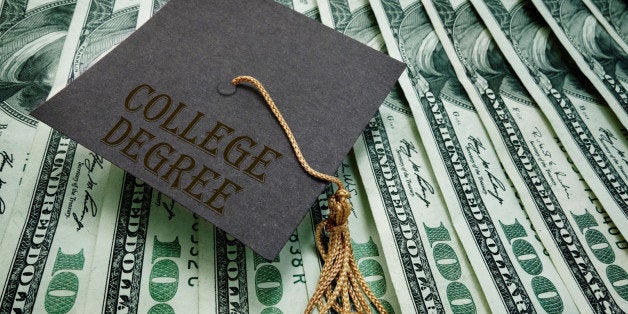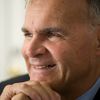
With the announcement of Arne Duncan's resignation as the secretary of education it's a good time to take a look at what he has accomplished, where he failed, and what work is still to be done to deal with the significant problems facing higher education.
With Duncan following his family back to his hometown of Chicago, he might be able to escape the threat of shoppers stopping him in the supermarket to complain about student debt. If I saw him in the aisle at Stop and Shop I know that would be the first thing I would do.
Here's my issue. When Duncan started at the education department in 2008, the average college student debt was $23,450 with about 29 million graduates in debt. Now, in 2015, there are 40 million students with at least one outstanding student loan and the average student debt is $29,000. A little over 70% of students graduating with a bachelor's degree have loans to pay off and the 3-year overall loan default rate is 13.7%, with the rate highest among 2-year college graduates. The current interest rate on federal student loans varies from 4.2 to 6.84. You can get other federal loans and a home mortgage at a lower rate than that.
The loan debt issue is complex and very important because I believe that student loans are at the heart of the vicious cycle that has resulted in the ever-escalating college tuition rates. The ballooning tuitions in turn, lead more families to resort to loans to cover the costs, further increasing the debt.
Duncan's policies on student loans, while well-intentioned, were ultimately fatally-flawed. The extension of the income-based repayment plan (PAYE) is far too generous, to the point of introducing moral hazard. While it eases the repayment concerns of many, it has also been strategically abused by expansive graduate schools in order to lure students in to borrow a lot. Meanwhile, those who could benefit the most from the program found it difficult to apply. We need to recognize that enrolling more students into income-based payments also helped colleges. It relieved pressures from them as it decreased their default rates. The administration also relaxed the credit eligibility requirement on parent plus loans. These loans have no limits. Once again we see that making financial aid more available, while seemingly the right thing to do, opens the door to abuse by the colleges and leads to even more debt burden on students and their families.
Simply put, colleges and universities know that students and their parents have access to billions of dollars in federal loans and grants, and so they continue to raise tuition rates because the open spigot of aid dollars lets them do it. And, One Dupont Circle and the colleges represented by the lobbyists there seem to like that just fine.
To be fair, Duncan contributed to positive changes as well. For example, the transition to the direct lending program seems, in principle, was the right thing to do. The simplification of the financial aid application and the extension of the Pell grant program are also both positives. More importantly and to his credit, Duncan rightly knew that the problems of college access and affordability were intimately linked to the quality of education provided and so he not only increased federal financial support to colleges but he also sought to exert an unprecedented level of control over colleges. He demanded more accountability and transparency.
Many may argue that Duncan was hard on colleges, but most of his efforts did not amount to any substantial control over them: the gainful employment regulation was struck down by a federal court; and the promised ranking system did not happen, instead the more modest 'college scorecard' disappointed in many aspects (with the exception of data showing the rate at which graduates from each college repay their students loans). Duncan was only really successful in cracking down on the for-profit colleges.
What could he have done that he did not do? Here are some ideas from the top of my list. He did not pick up on the growing interest in and momentum of Children Savings Accounts (CSAs). Part of a long-term solution to lack of access and affordability in higher education can come by establishing a Federal CSA program.
But then, Duncan's proposals and policies always favored borrowing over saving: borrowing (and not repaying) has been incentivized with lower interest rates, decrease in credit checks for parent plus loans, generous income based-repayment, and forgiveness (he even considered removing the income tax on the forgiven portion), while savings is not really encouraged, he even considered to roll back expanded tax cuts for 529 savings plans and repeal future tax savings for the Coverdell education-savings program earlier this year (which did not happened as it got a lot of criticism). In short, the mentality seems to have been: borrowing (and not repaying) is encouraged by decreasing taxes, but savings is somehow penalized (or not encouraged) but not providing tax breaks.
Lastly, more could have been done (and still must be done) to prevent colleges from increasing tuition and also to push states to re-invest in higher education.
We should consider a strategic increase in federal aid to public colleges and tie it to lower tuition rates, thereby increasing public enrollment and creating market pressure on the private colleges to lower their tuition in an attempt to remain competitive. States would effectively be required to agree to stop cutting their own higher-education budgets, to gradually increase spending on colleges, and to ensure that no students will have to take out any loans to pay for school.
The feds can also act on their threat to reduce loan support if colleges do not deliver on increased need-based support and graduation rates. Perhaps the feds could begin a planned cut in the provision of student loans but compensate by an increase in the level of and the upper income limit on Pell grants.
I doubt that I will run into Arne in the supermarket, not that it would matter anymore, but maybe Dr. King, Duncan's successor, might take note of the Duncan legacy and get down to the business of truly making higher education more accessible, affordable, and successful.
